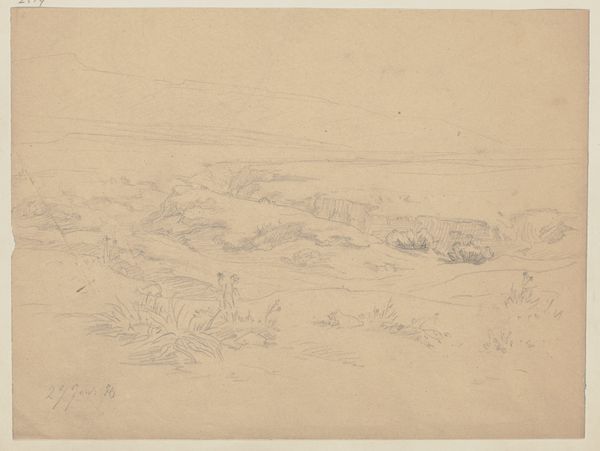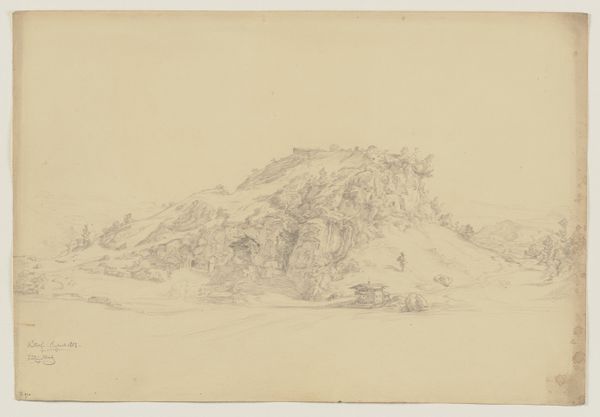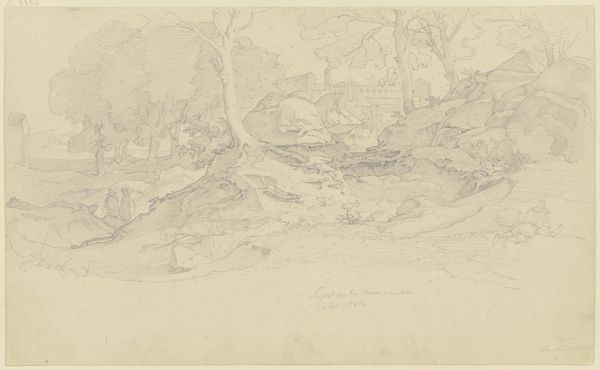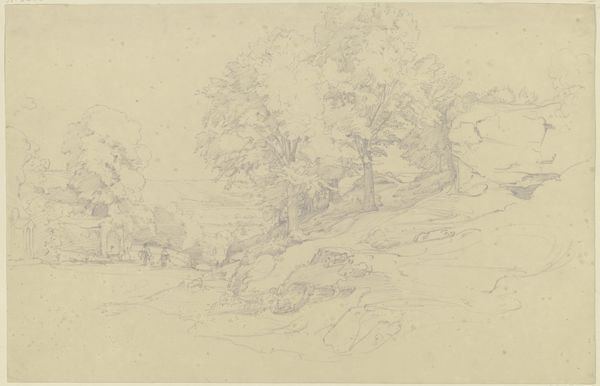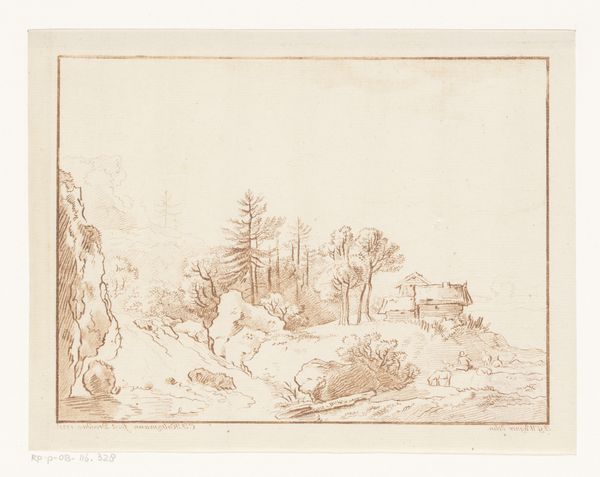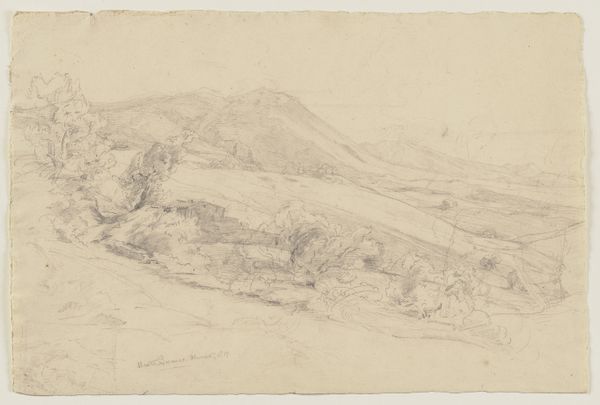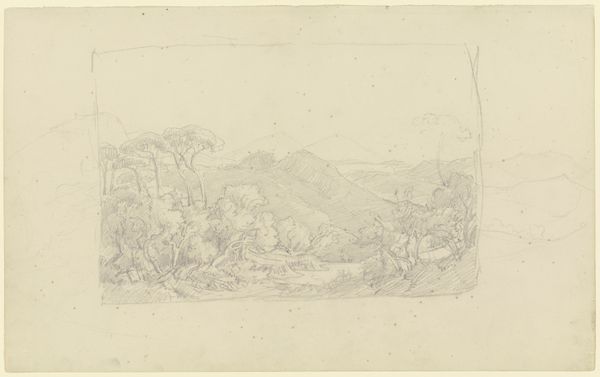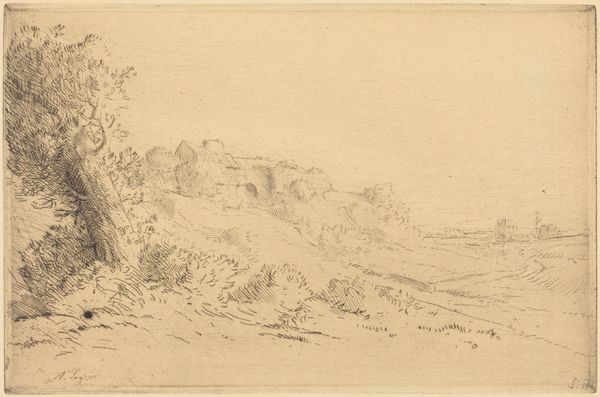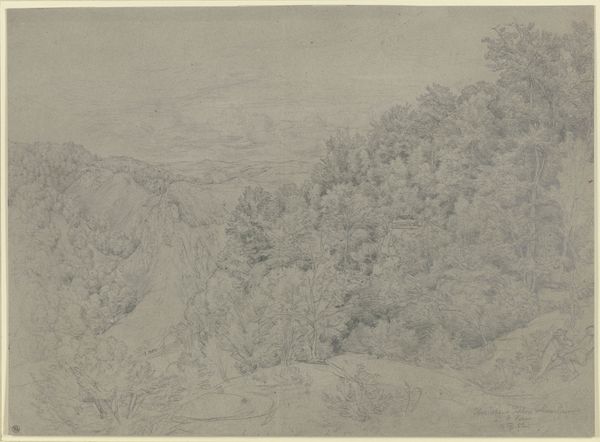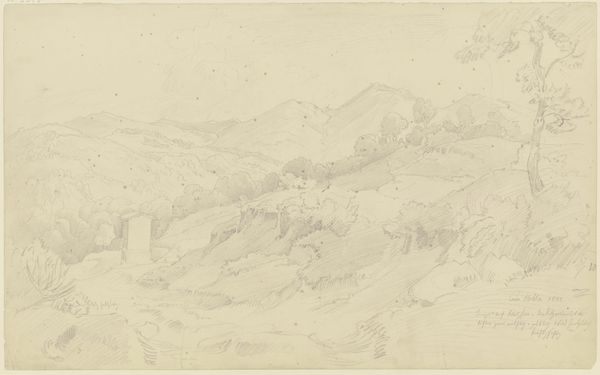
Copyright: Public Domain
Editor: This is Friedrich Metz’s "Path Study," a pencil drawing from 1876. It feels unfinished, almost like a fleeting impression of a landscape. What do you see in this piece? Curator: The formal qualities are quite interesting. Notice how Metz uses line to create a sense of depth, but also flatness. The cross-hatching and stippling create varied textures, yet the composition remains very two-dimensional. Are we looking at a study of light and shadow? Editor: I hadn’t thought about the two-dimensionality, but I see it now. It's like he's deliberately flattening the space, even though it’s a landscape. Curator: Precisely. And observe the negative space around the foliage. The shapes it forms are just as important as the drawn elements themselves. How does the treatment of form contribute to the overall composition? Editor: So the forms aren't just representational, but compositional elements themselves. The textures and shapes become a language. Curator: Precisely. Metz emphasizes how line and texture establish depth and mass through the composition’s geometric qualities. In some respects, one might say he anticipates certain formal trends in later art. Editor: That’s a really insightful perspective. I initially saw it as a simple landscape sketch, but I now recognize it to be a complex investigation of form and space. Curator: Indeed, understanding such intrinsic components enhances our understanding. Therein lies much of its elegance.
Comments
No comments
Be the first to comment and join the conversation on the ultimate creative platform.
